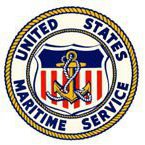Below is a chronological listing of books about modern Japanese edged weapons from 1868 to 1945. Any comments, corrections, or criticism welcomed.
大日本刀剣商工名鑑 Japanese Sword Business Directory. 東京: 日本刀剣新聞社, 1942. [Japanese language only]
Gregory, R. Japanese Military Swords. 1971.
Gregory, R., and R. Fuller. A Guide to Showa Swordsmiths: With 106 Oshigatas. 1978.
Fuller, Richard, and Ron Gregory. Swordsmiths of Japan, 1926–1945. 1983.
Fuller, Richard, and Ron Gregory. Military Swords of Japan, 1868–1945. London, GB: Arms and Armour, 1986.
Johnson, Larry. Japanese Bayonets: The Definitive Work on Japanese Bayonets, 1870 to the Present. Broken Arrow, Okla.: Cedar Ridge Publications, 1988.
Imai Akio 今井昭夫 and Ikemori Masato 池森正人. 日本の軍用刀剣1868-1945年 [Japanese Military Used Swords, 1868–1945]. Army edition 陸軍編. 2 volumes. 全日本軍装研究会, 1990.
Dawson, Jim. Swords of Imperial Japan, 1868–1945. Newnan, Ga.: Stenger-Scott Publishing, 1996.
Fuller, Richard, and Ron Gregory. Japanese Military and Civil Swords and Dirks. Charlottesville, Va.: Howell Press, 1997.
Wallinga, Herman A. Gendaito Made at the Minatogawa Shrine. 2000.
Slough, John S. [Livio W. Cilio]. An Oshigata Book of Modern Japanese Swordsmiths, 1868–1945. Rivanna River Company, 2001.
Fimio, Frederick A. Swords and Swordsmiths of the Gendaito Period: 1868 to 1989. Japanese Sword Society of Canada, 2002.
Kapp, Leon, Hiroko Kapp, and Yoshindo Yoshihara. Modern Japanese Swords and Swordsmiths: From 1868 to the Present. Tokyo: Kodansha International, 2002.
Kishida, Tom. The Yasukuni Swords: Rare Weapons of Japan, 1933–1945. Translated by Kenji Mishina. Tokyo: Kodansha International, 2004.
Dawson, Jim. Swords of Imperial Japan, 1868–1945. Cyclopedia ed. Newnan, Ga.: Stenger-Scott Publishing, 2007.
LaBar, Raymond C. Bayonets of Japan: A Comprehensive Reference on Japanese Bayonets. Tunnel Hill, GA: RAYMAR, 2008.
Kapp, Leon, Hiroko Kapp, and Leo Monson. Modern Japanese Swords: The Beginning of the Gendaito Era. CreateSpace Independent Publishing Platform, 2015.





